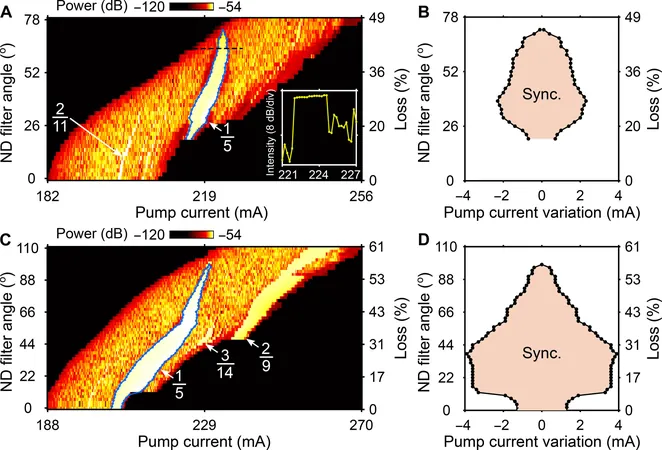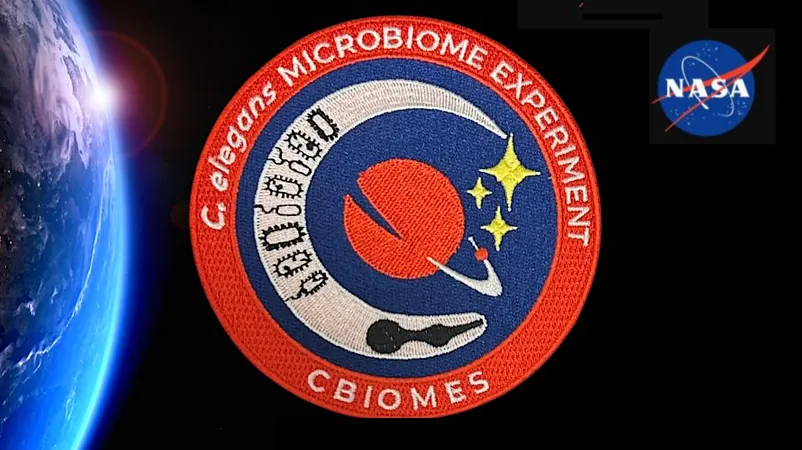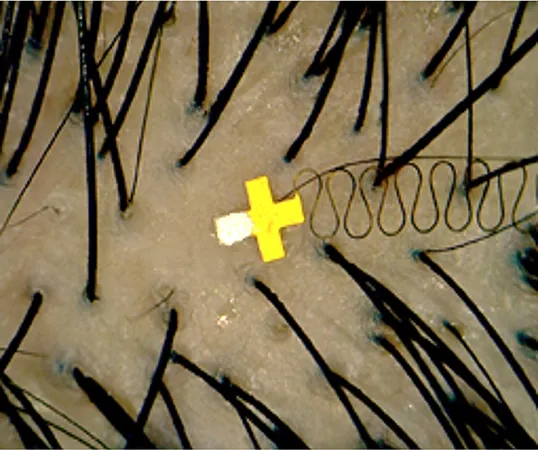
Breakthrough in Laser Technology Reveals Groundbreaking Insights into Synchronization Phenomena
2025-03-24
Author: Rajesh
In an exciting development from Aston University, researchers have successfully conducted the first experimental demonstration of complex behaviors in oscillatory systems—an important discovery that sheds light on synchronization patterns found in nature and technology. This ground-breaking study indulges our understanding of synchronization regions, known as Arnold's tongues for their graphical appearance, revealing when systems harmonize and when they diverge.
Arnold's tongues have been observed in a myriad of natural oscillating phenomena, including heartbeats, pendulum motions, and even the synchronization of flashing lights. Historically, theoretical models predicted that these regions could display unexpected geometries—like leaf-like patterns, characterized by intricate shapes, and gaps indicating states of unsynchronization. Until now, however, confirming these predictions through experimentation has been a formidable challenge.
For the first time, this innovative study has confirmed the existence of these predicted behaviors, establishing their reality in both natural and engineered systems. Titled “Unveiling the Complexity of Arnold's Tongues in a Breathing-Soliton Laser,” the research is published in the esteemed journal Science Advances. Lead researcher Dr. Sonia Boscolo from the Aston Institute of Photonic Technologies collaborated with experts from East China Normal University and the University of Burgundy in France.
Utilizing a cutting-edge breathing-soliton laser—an ultrafast fiber laser that generates dynamic, oscillatory pulses—Dr. Boscolo and her team made significant observations. They were able to confirm not only the elusive leaf-like structure but also a novel ray-like pattern. These findings were theorized over two decades ago, marking a substantial leap in the field. Additionally, the researchers documented gaps within the ray-like synchronization regions, providing further empirical validation for the earlier theoretical predictions.
Dr. Boscolo stated, "This discovery marks a significant advance in our grasp of nonlinear systems. By experimentally validating these intricate synchronization patterns, we pave the way for deeper research into unusual synchronization phenomena across various physical contexts."
The implications of these findings extend far beyond academic curiosity. The insights gained from this research could revolutionize multiple disciplines including neuroscience, where understanding brain rhythms is crucial; telecommunications, where synchronized signals are paramount; and even space science, which relies heavily on precise synchronization for satellite communication and data transmission.
As the scientific community digests these revelations, new doors are opening for the exploration of synchronization dynamics, potentially altering the landscape of technology and our comprehension of the universe itself. This study is not just a triumph for its authors but also a significant milestone for future innovations that rely on the principles of synchronization.




 Brasil (PT)
Brasil (PT)
 Canada (EN)
Canada (EN)
 Chile (ES)
Chile (ES)
 Česko (CS)
Česko (CS)
 대한민국 (KO)
대한민국 (KO)
 España (ES)
España (ES)
 France (FR)
France (FR)
 Hong Kong (EN)
Hong Kong (EN)
 Italia (IT)
Italia (IT)
 日本 (JA)
日本 (JA)
 Magyarország (HU)
Magyarország (HU)
 Norge (NO)
Norge (NO)
 Polska (PL)
Polska (PL)
 Schweiz (DE)
Schweiz (DE)
 Singapore (EN)
Singapore (EN)
 Sverige (SV)
Sverige (SV)
 Suomi (FI)
Suomi (FI)
 Türkiye (TR)
Türkiye (TR)
 الإمارات العربية المتحدة (AR)
الإمارات العربية المتحدة (AR)